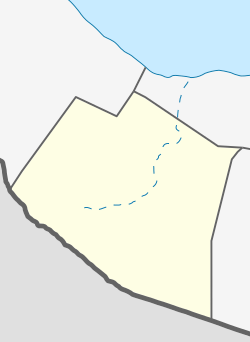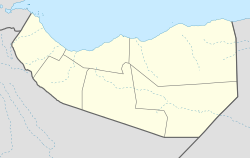Daarbuduq Dacar Budhuq | |
|---|---|
Town | |
| Coordinates: 9°51′24″N44°31′38″E / 9.85667°N 44.52722°E | |
| Country | |
| Region | Maroodi-Jeex |
| District | Hargeisa |
| Time zone | UTC+3 (EAT) |
Daar Buduq (Somali : Dacarbudhuq) is a town in the Marodi Jeh province of Somaliland. Situated in the Hargeisa District, it is located northeast by road from Hargeisa and southwest of Berbera. [1] [2]
Contents
The town is inhabited by people from the Adam Issa and Abokor Issa subdivisions of the Isamusa clans. It is to the west of the hills of Adadleh. [3]

